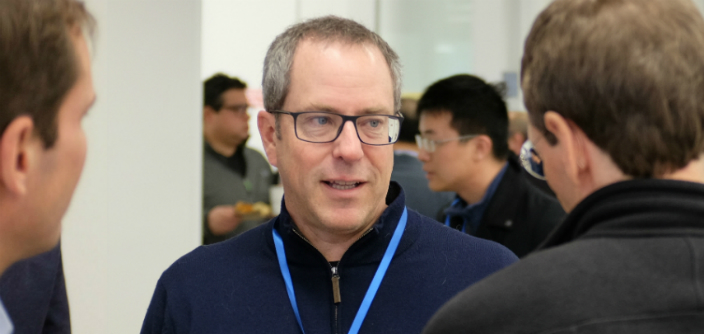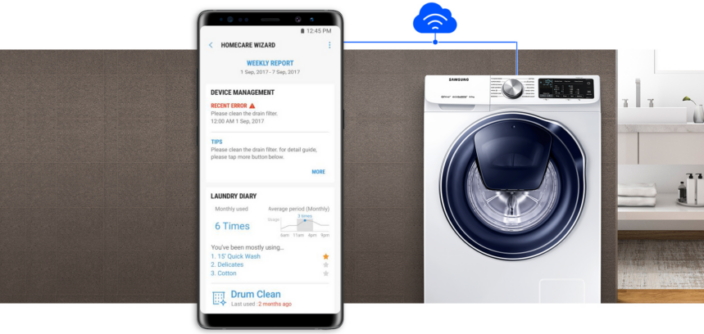Where NEXT for Tech Innovation in 2018?
on March 15, 2018
One way that Samsung Electronics works with the technology startup community is through Samsung NEXT – an innovation arm that scouts, supports and invests in forward-thinking new software and services businesses and entrepreneurs. By rubbing shoulders with those on the frontline of software innovation, as well as harnessing the insights of its homegrown experts, Samsung is always thinking about how technology, and indeed society, will change. We spoke with members of the Samsung NEXT team—here are the top five technologies that will change people’s lifestyle in 2018.
1. Faster, more transparent machine learning
Artificial intelligence (AI) will dramatically expand within the next 12 months. It is already changing the way people interact with a number of applications, platforms and services across both consumer and enterprise environments.
In the next couple of years, there will be new approaches on two fronts. Firstly, less data will be required to train an algorithm. This means an image recognition system that currently needs 100,000 images to learn how to operate will only need a small fraction of that number. This will make it easier to quickly implement powerful machine learning systems.
Secondly, the technology will become more transparent. Advances in technology will mean researchers will be able to open the black box of AI and more clearly explain why a particular model made the decision it did. Currently, a lot of academia and start-ups are putting much effort into understanding how a machine makes decisions, how the models are learning from the data and what are the parameters of data that influence the models.
Scott Phoenix, The CEO of Vicarious, makes a presentation about human-level intelligent robots at the Samsung CEO Summit last October in San Francisco. (source: www.vicarious.com)
Samsung plans to build an AI platform under a common architecture that will provide the deepest understanding of usage context and behaviors. This is one of the core strategies to make the user-centric AI ecosystem. Samsung NEXT has also invested in various companies innovating in the field, including Vicarious, a company developing neuroscience-based artificial general intelligence (AGI) for robots for simpler deployment with faster training and Bonsai, which develops an AI platform that empowers enterprises to create, deploy and manage AI models, and FloydHub, a start-up that has developed a cloud service for machine learning.
2. New AR and VR form factors and viewing models
Both augmented reality (AR) and virtual reality (VR) are increasingly being relied upon to create more immersive worlds where technology enables users to get more hands-on with virtual overlays and environments. In the case of AR, devices won’t remove us from our world, but will rather enable us to have objects appear as if they were really there.
2018 will witness more developers embracing AR, starting to make interesting applications moving beyond the world of gaming. One such example is a furniture company planning to make its full catalogue available in AR. Samsung NEXT has invested in companies like 8i, which provides a platform that enables true 3D (fully volumetric) video capture of people, allowing viewers to walk around as real humans in VR and AR.
8i’s Holo augmented reality application enables digital recreation of people and characters to be seen in the real world through a smartphone camera. (source: www.8i.com)
Head Mounted Displays (HMDs) will see foundational technology improvements in the quality of their displays, sensors, and materials. In 2018, there will be a lot of excitement in the industry in the form of M&A and investment activities. “For VR, we will see more standalone devices, falling between existing HMDs powered by mobile phones, and high-end hardware connected to powerful PCs. This will enable more people to experience the technology in new ways,” said Ajay Singh, Samsung NEXT Ventures.
3. Blockchain to look beyond cryptocurrencies
“In 2017, we saw blockchain technology increasingly applied to develop unbanked countries and communities,” said Raymond Liao from Ventures. “With underpinnings in peer-to-peer transactions, blockchain has the power to democratize transactions by removing the middleman and reducing the needless fees that so frequently hamstring those deprived of banking services.”
Cryptocurrency is the dominant killer application for blockchain up to now. However, we will see blockchain entrepreneurs and decentralization idealists, freshly financed by token sales, marching to either empower consumers against the one-sided data monetization paradigm, or break up enterprise data silos in, e.g., supply chain and healthcare industries.

Samsung’s focus on security will be an advantage for the company as far as blockchain is concerned. The elephant in the room around blockchain is that the entire technology is only as secure as the users’ keys. Samsung’s technology enables enterprise customers to be assured of a certain level of security in how their employees interact with their blockchain-based apps. Furthermore, Samsung NEXT includes in its portfolio companies like HYPR that provides enterprise with enhanced security and user experience using blockchain and Filament that secures Internet of Things (IoT) devices with their blockchain protocol.
4. IoT to put power in the hands of healthcare patients
Healthcare is an industry that is ripe for disruption. We will begin to see the power of IoT in healthcare with the emergence of inexpensive, continuous ways to capture and share our data, as well as derive insights that inform and empower patients. Moreover, wearable adoption will create a massive stream of real-time health data beyond the doctor’s office, which will significantly improve diagnosis, compliance and treatment. In short, a person’s trip to the doctor will start to look different – but for the right reasons.
Samsung is using IoT and AI to improve efficiency in healthcare. Samsung NEXT has invested in startups in this area, such as Glooko which helps people with diabetes by uploading the patient’s glucose data to the cloud to make it easier to access and analyse them. Another noteworthy investment in this space from Samsung NEXT is HealthifyMe, an Indian company whose mobile app connects AI-enabled human coaches with people seeking diet and exercise advice.

HealthifyMe connects patients with AI-based healthcare coaches
(source: www.healthifyme.com)
Samsung is uniquely positioned among tech companies in that it already has a significant business in healthcare. The company has solutions in wearables, hospital screens and tablets, and X-ray and MRI machines. By tying all these solutions together and cooperating with other partners, it will enable patients to manage their health from their own devices.
5. IoT breaks free from homes and enters the city
In the next couple of years, one should expect to see IoT transform urban environments thanks to the combination of learnings from smart homes and buildings, and the proliferation of 5G. Transformation will happen in waves, starting with innovation that requires fewer regulations. It is expected to impact the daily life of the community in meaningful ways, such as parking solutions, mapping, and bike share schemes.
Samsung NEXT already has various IoT investments including Stae for data-driven urban planning, and Swiftly that provides enterprise software to help transit agencies and cities improve urban mobility.
The company has its own IoT platform SmartThings—an acquisition that came through the Samsung NEXT team. The platform is connected to ARTIK for enterprises and HARMAN Ignite’s connected car platform, creating a comprehensive IoT ecosystem. Based on its progress on IoT, Samsung showcased its vision for ‘Samsung City 2020’ at this year’s CES, which is on its way to realization.

The Samsung Electronics CES 2018 booth showed off its “Samsung City 2020” concept


